Abstract
A prospective study has been done on the relationship between closed head trauma and aphasia. The most frequent type of aphasia seen after closed head injury is an anomic aphasia. This aphasia is often associated with other defects of higher cortical function. The second most common type of aphasia is a Wernicke's aphasia. Other types of aphasia were not seen in this study. The areas of the head which when injured produce aphasia are the right orbitofrontal region and the left temporoparietal region. The prognosis for recovery appeared highly variable.
Full text
PDF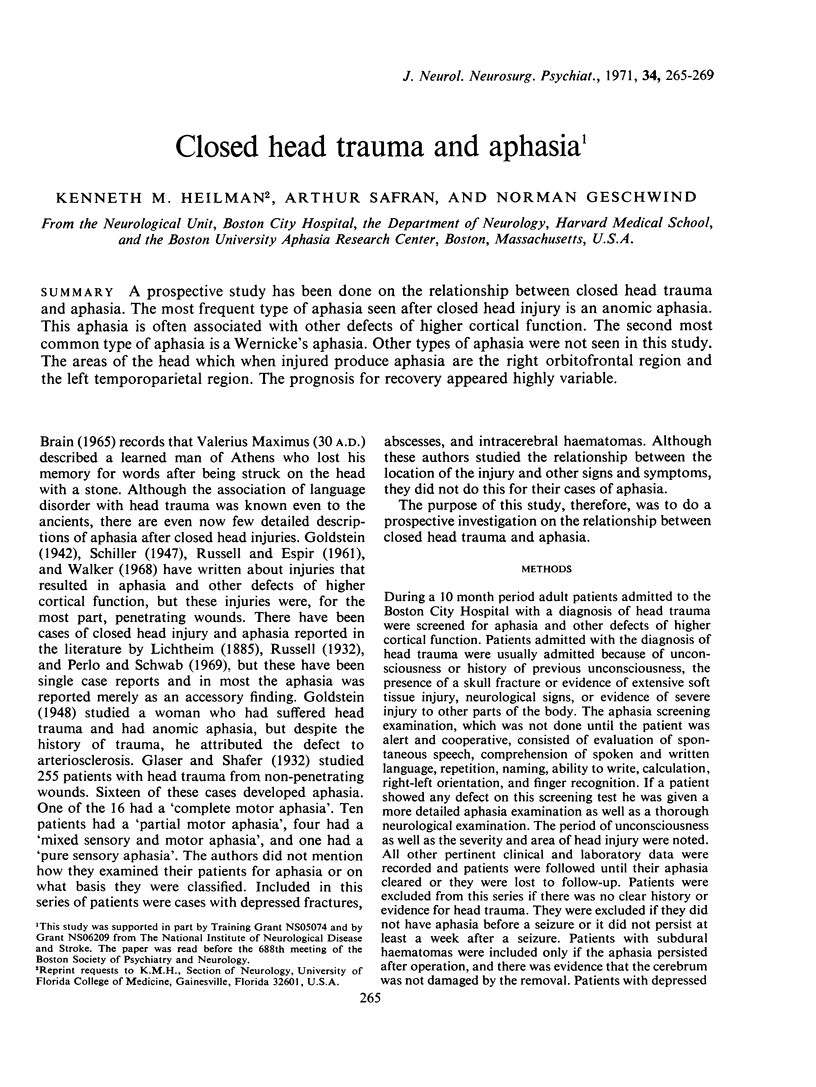
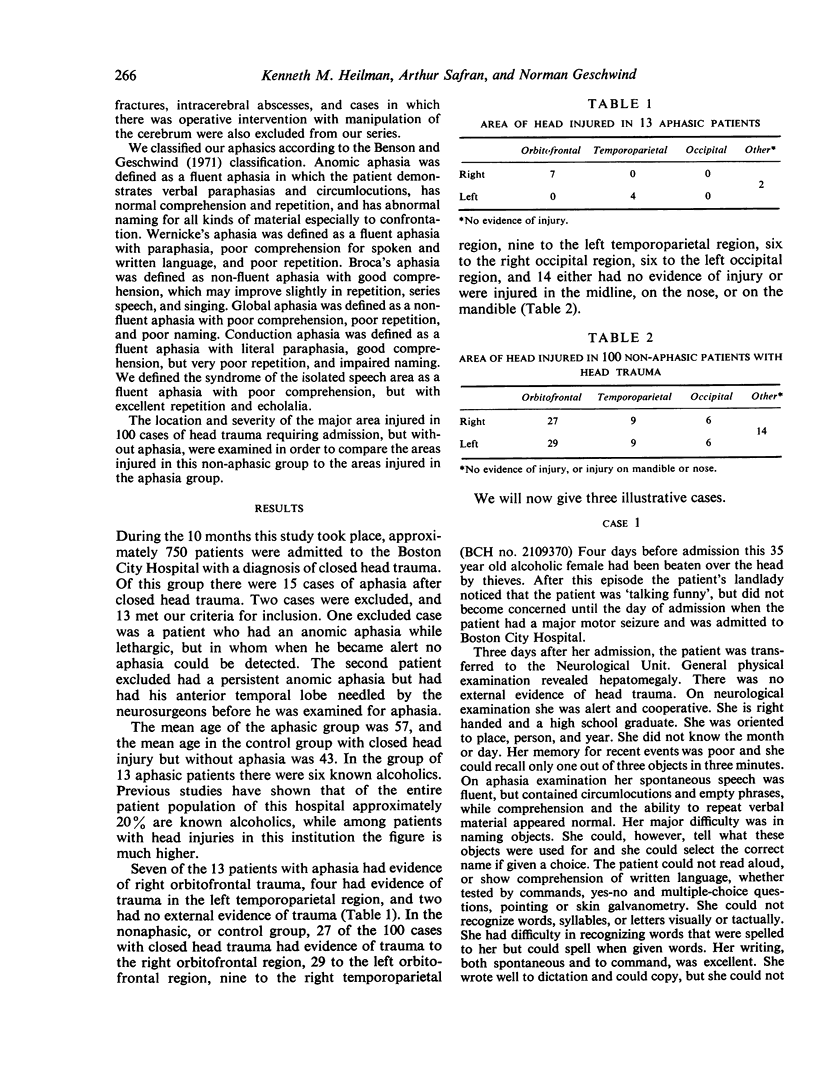
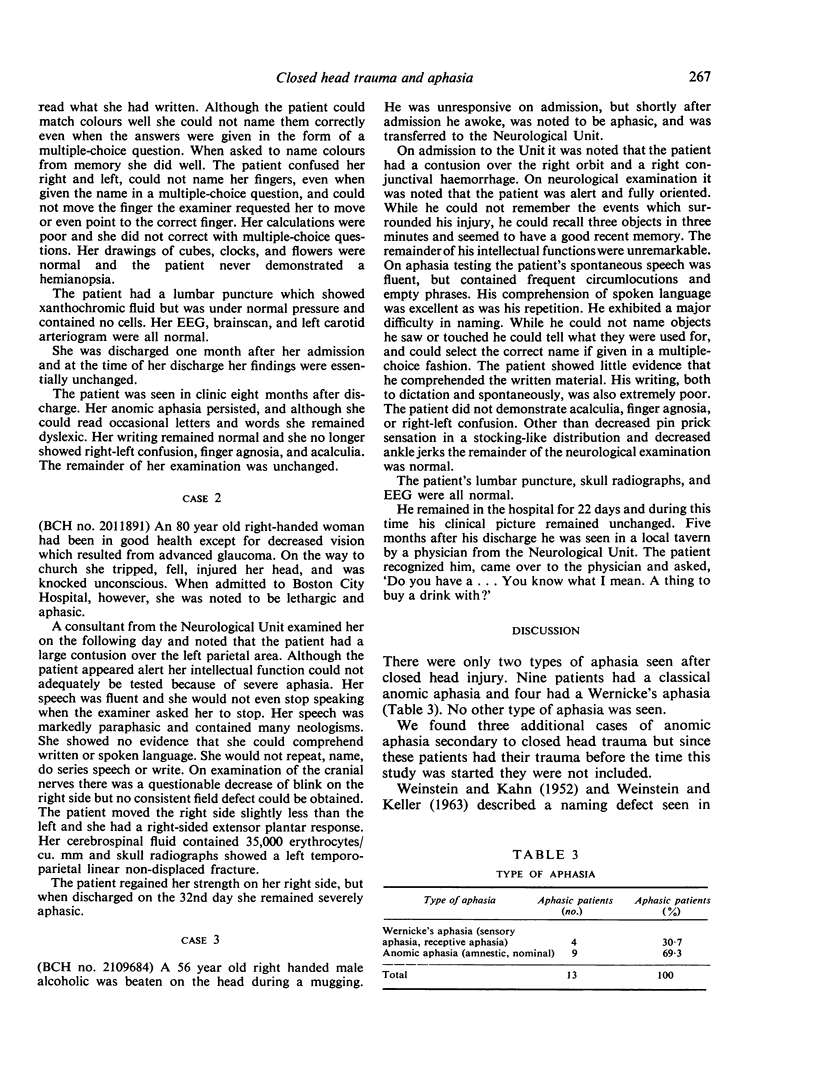
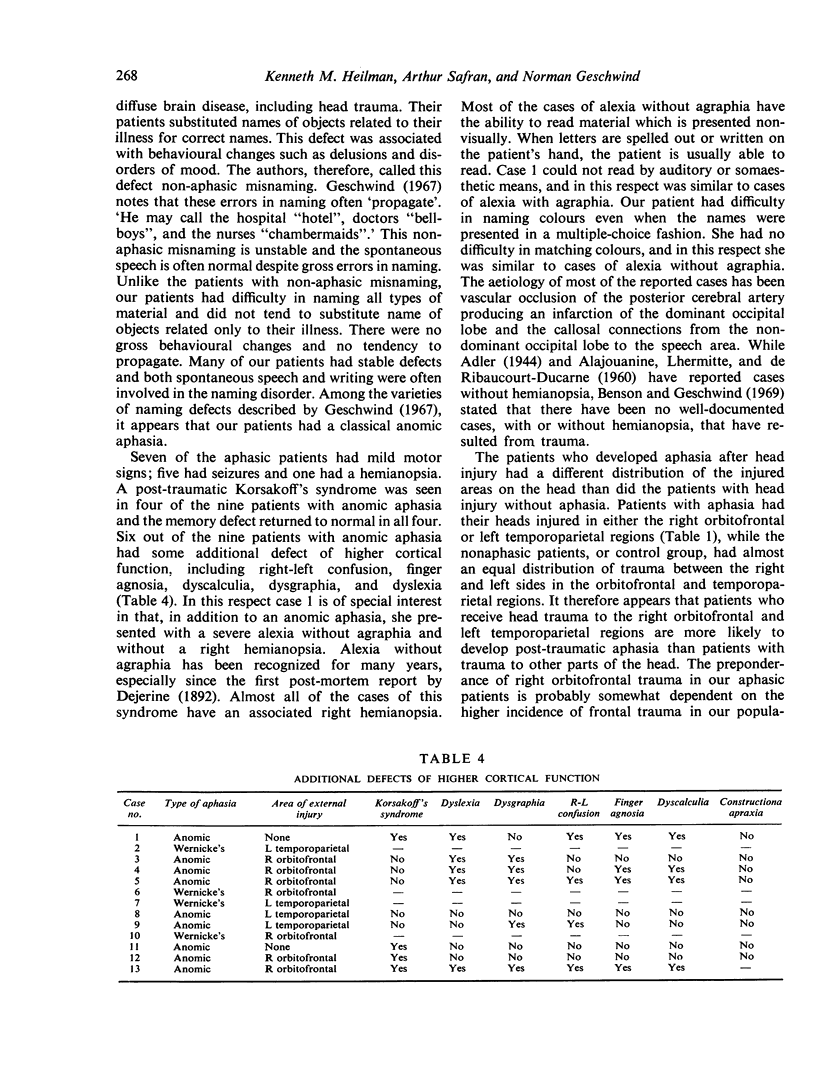
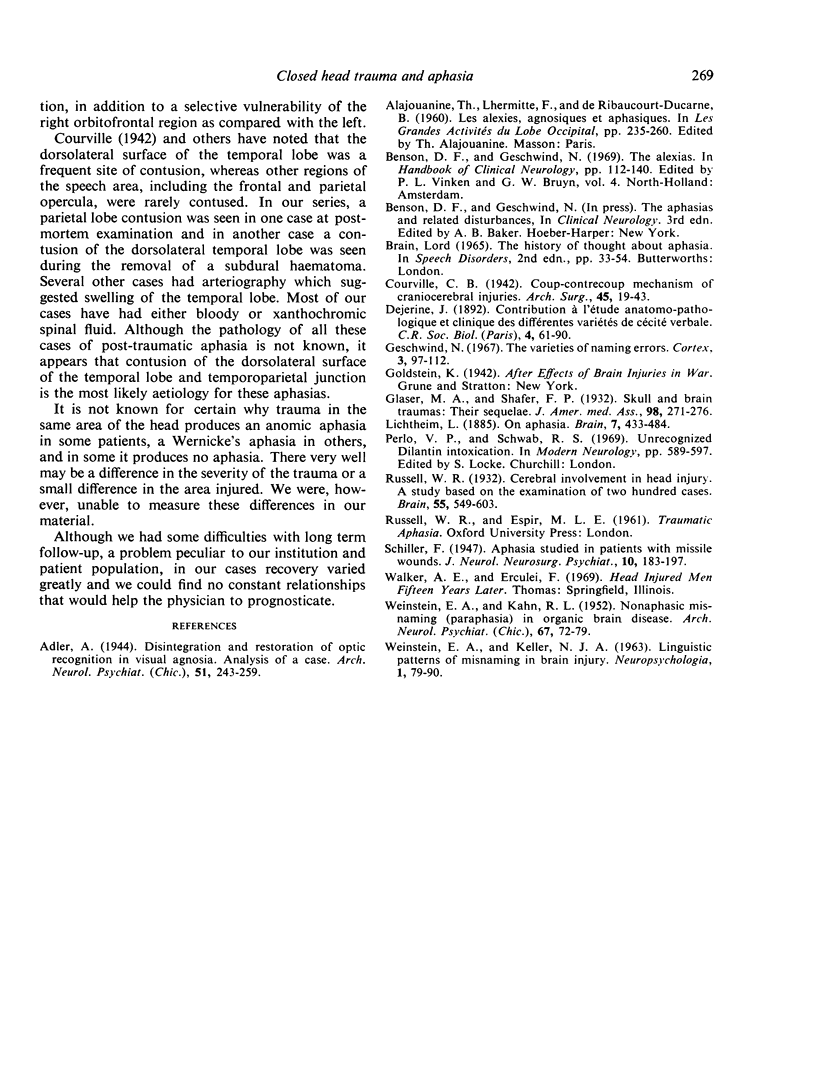
Selected References
These references are in PubMed. This may not be the complete list of references from this article.
- WEINSTEIN E. A., KAHN R. L. Non-aphasic misnaming (paraphasia) in organic brain disease. AMA Arch Neurol Psychiatry. 1952 Jan;67(1):72–79. doi: 10.1001/archneurpsyc.1952.02320130078008. [DOI] [PubMed] [Google Scholar]


